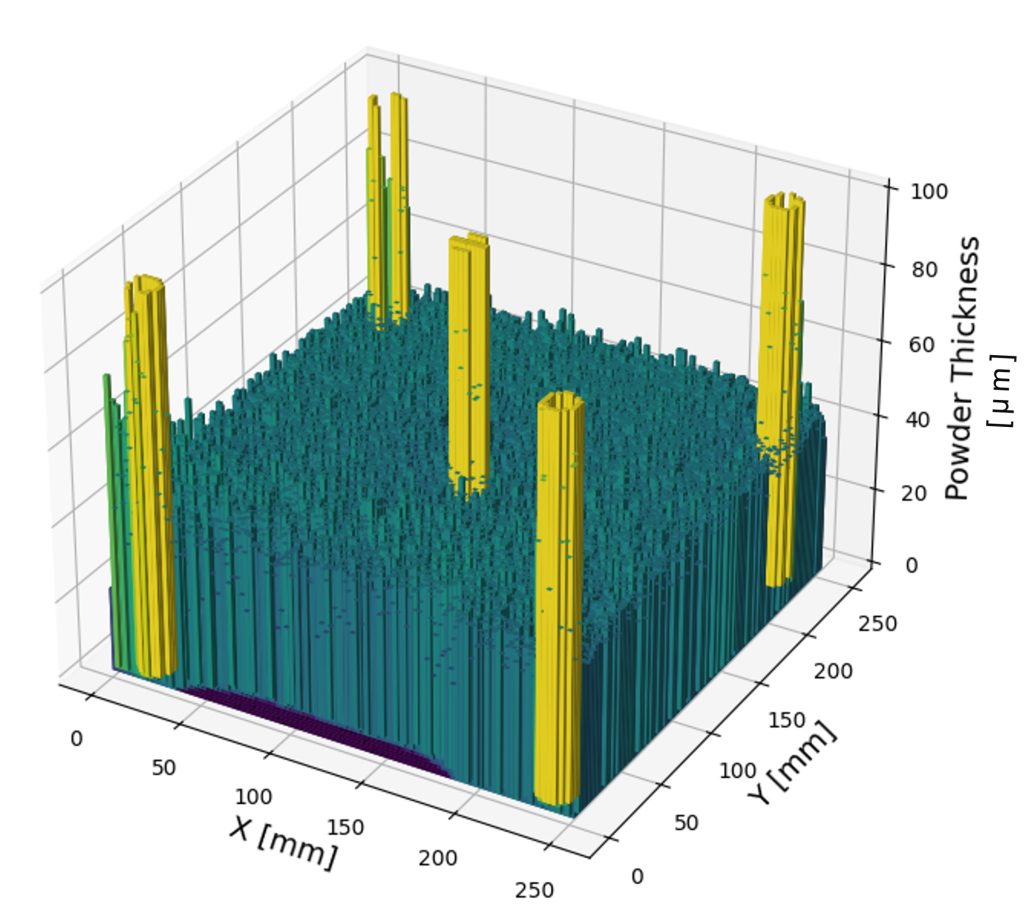Chicago-based 3D printing quality assurance software developer Phase3D has announced the commercialization of its new True Layer Thickness toolkit at the Additive Manufacturing Users Group (AMUG) 2024 conference in Chicago, running from March 10-14.
This new monitoring and inspection tool measures, in microns, the quantity of metal powder distributed across a 3D printer’s build platform. This helps users to ensure an even material distribution for each layer during the powder bed fusion 3D printing process.
The new offering seeks to address the critical needs of companies within regulated industries such as aerospace, medical, and energy to ensure the consistent production of high-quality and certifiable metal parts. Phase3D reportedly developed True Layer Thickness in collaboration with an unnamed ‘prominent aerospace company.’
“We are pleased to introduce True Layer Thickness. This new toolkit underscores our commitment to advancing AM for the benefit of widespread adoption of the technology for critical use applications,” commented Dr. Niall O’Dowd, CEO and Founder of Phase3D.

Phase3D releases True Layer Thickness toolkit
True Layer Thickness has been designed to integrate with Fringe, Phase3D’s proprietary monitoring system for metal additive manufacturing. This technology allows for on-demand inspection of parts as they are 3D printed.
In an interview with 3D Printing Industry, O’Dowd explained that this system uses structured light to measure a height map of each material layer both before and after melting in powder bed fusion 3D printers. This creates live 3D visualizations of any height-based anomalies, allowing users to “make informed decisions about build cancellation.”
These anomalies can be caused by recoater streaks, short feeds, or the uneven distribution of metal powder. Such issues can ultimately result in a lack of fusion, keyhole porosity, and other problems with the 3D printed part. Therefore, Fringe can increase 3D printer utility, reduce waste, and decrease the movement of defective parts into post-inspection processes.
True Layer Thickness creates quantifiable measurements of the spread of powder during 3D printing. Designed to be integrated with Fringe, Phase3D’s new toolkit can be used with most PBF 3D printers currently on the market. The new offering is tailored to address challenges within industrial applications associated with the aerospace, defense, energy, and medical sectors.
Phase3D believes that the launch of True Layer Thickness marks a key step in the goal of achieving the repeatable production of parts that meet stringent industrial certification requirements.
The new toolkit can be viewed first-hand at Booth 101 in Salon D at AMUG 2024.

Quality control for metal AM
Quality assurance is key to metal 3D printing, enabling substantial time and cost savings for those targeting the production of industrial-scale, certifiable parts. In 3D Printing Industry’s survey on 3D printing trends to expect in 2024, industry experts highlighted the increasing importance of part quality in additive manufacturing.
Last year, 3D printing software and services company Materialise released its AI-powered Process Control software for metal 3D printing. This tool enables businesses to control the quality of their parts by using layer data collected during 3D printing.
By analyzing and correlating this information, users can locate problematic parts before post-processing and quality inspection stages, which can add 30% to 70% to the costs of a final part. Using artificial intelligence (AI) and machine learning, Process Control automates the layer evaluation process, saving time and reducing the impact of human error.
Materialise worked with Phase3D and Sigma Additive Solutions to develop this offering, combining their supplementary data to achieve a comprehensive understanding of the 3D printing process. Sigma Additive Solutions’ technology provides heat data from the melt pool, the region where material is melted during 3D printing.
Elsewhere, Californian metal 3D printer manufacturer Velo3D offers its Assure Quality Assurance and Control System for its laser powder bed fusion (LPBF) Sapphire 3D printers.
This software monitors the metal 3D process, detecting any defects as they occur as well as providing quality control and build report summaries. Leveraging live, multi-sensor, physics-based detection algorithms, the software can also trace part quality during 3D printing, streamlining the 3D printed-part validation process.
What does the future of 3D printing hold?
What near-term 3D printing trends have been highlighted by industry experts?
Subscribe to the 3D Printing Industry newsletter to keep up to date with the latest 3D printing news. You can also follow us on Twitter, like our Facebook page, and subscribe to the 3D Printing Industry Youtube channel to access more exclusive content.
Are you interested in working in the additive manufacturing industry? Visit 3D Printing Jobs to view a selection of available roles and kickstart your career.
Featured image shows Phase3D’s Fringe structured light in-situ monitoring technology. Photo via Phase3D.


